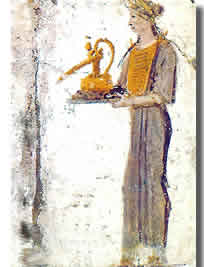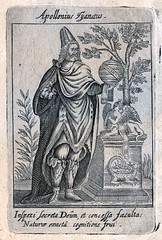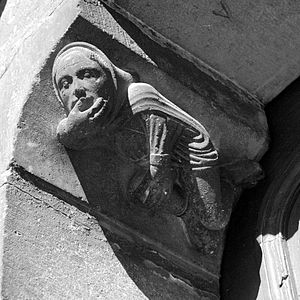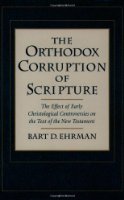*
The Brother of the Lord
.
COVERED IN THIS POST:
- brother of the Lord
- the meaning of “brother” in the epistles
- brethren of a sect?
- plain meanings
- apologist objections:
- who is “the Lord”?
- battle of the prepositions
- question begging as methodology
- why not “brother of Jesus”?
- or “brothers of Jesus”?
- separating Cephas and James
- G. A. Wells: a Jewish messianic group?
- more grammar: genitive vs dative
- Josephus’ James
- Ehrman on Robert Price
- “brother of the Lord” as a marginal gloss
- question begging as methodology: Ehrman as beggar
.
* * * * *
Paul’s Associations
(Did Jesus Exist? pp. 145-156)
.

In his 5th chapter (approximately halfway through the book), Ehrman says he will “wrap up” his discussion of the historical evidence for Jesus by putting forward two points, two pieces of “Key Data” which confer a “high degree of certainty that (Jesus) was an historical figure.”
The first of these is a favorite of apologists everywhere, because it is so straightforward, so plain. No complex study of a text is required, no knowledge about ancient philosophy or obscure languages is necessary. We merely need to bring an obvious meaning to a five-word phrase, a phrase that is simple even in the original Greek where it is only four words, prefaced by a man’s name: “Iakōbon ton adelphon tou kuriou”:
“James, the brother of the Lord”
What could be simpler? We ‘know’ from the Gospels that Jesus had a brother named James. Here Paul is declaring that when he visited Jerusalem three years after his conversion to get to know Cephas, he also saw “James, the brother of the Lord” (Galatians 1:19). How could Jesus have had a brother if he had not lived on earth? Can mythicists not read?
Fortunately, we can. We can read a host of other appearances of the word “brother” (adelphos) in the epistles. Here are a few:
Rom. 16:23 – Greetings also from . . . our brother Quartus.
1 Cor. 1:1 – Paul . . . and our brother Sosthenes
1 Cor. 5:11 – you must not associate with anyone who calls himself a brother but is immoral or greedy . . .
1 Cor. 7:12 – If any brother has an unbelieving wife . . .
1 Cor. 8:13 – If food causes my brother to stumble . . . I will not cause my brother to fall.
1 Cor. 16:11-12 – I am expecting (Timothy) along with the brothers. As for brother Apollos, I strongly urged him to go to you with the brothers.
2 Cor. 2:13 – . . . because I did not find my brother Titus there.
2 Cor. 8:18 – We are sending with him the brother who is praised by all the churches . . .
Phil. 2:25 – . . . to send back to you Epaphroditus, my brother and fellow-worker . . .
Col. 4:7 – (Tychicus) is a dear brother and faithful servant in the Lord.
1 Thes. 3:2 – Timothy, our brother and fellow-worker of God in the gospel of Christ.
1 Tim. 3:15 – Yet do not regard him as an enemy, but admonish him as a brother.
1 Pet. 5:12 – Silvanus, the faithful brother . . .
2 Pet. 3:15 – Paul, our friend and brother . . .
Rev. 1:9 – I, John, your brother, who share with you . . .
Brethren of a sect
All of these refer unmistakably to men who are members of the sect (and there are a handful of occurrences of the word “sister” referring unmistakably to a female member of the sect). The above amount to 14 out of a total of over 40 in the epistles.
In addition, there are about a dozen which, while ambiguously worded, are also virtually certain to be meant as members of the sect, such as:
1 Cor. 6:6 – Is it possible that there is nobody among you wise enough to judge a dispute between believers [brothers], but one brother goes to law against another, and this in front of unbelievers?
James 2:15 – If a brother or a sister is in rags with not enough food for the day . . .
James 4:11 – He who disparages a brother or passes judgment on his brother disparages the law and judges the law.
1 Jn 2:9 – Anyone who claims to be in the light but hates his brother is still in the darkness.
1 Jn 3:10-11 – No one who does not do right is God’s child, nor is anyone who does not love his brother. The latter means a member of sect, since: For the message you have heard from the beginning is this: that we should love one another.
And that’s just in the singular. References to “brothers” in the plural also abound in the dozens, with a clear meaning of “brethren” of the sect, such as:
1 Cor. 15:6 – Then he was seen by over five hundred brothers at once.
Heb. 2:11 – . . . for which reason, he [Jesus] is not ashamed to call (the ones made holy, i.e., believers) his brothers.
1 Pet. 5:9 – You know that our brotherhood throughout the world is undergoing the same kind of sufferings.
And at this point we need to note the reference in 1 Corinthians 9:5 to “the brothers of the Lord” which is regularly paired with Galatians 1:19 as allegedly referring to siblings of Jesus.
Plain meanings
In the singular, I have been able to locate in the epistles and Revelation only two usages of the word “brother” having the clear meaning of “sibling”: a reference in 1 John to Cain as the murderer of his brother Abel, and the ascription heading the epistle of Jude: “Jude, a servant of Jesus Christ and brother of James.” In the plural there is technically one, in 1 Timothy 5:2. As far as the world of the epistle writers is concerned, a “plain meaning” of “brother” equals the sense of “brethren” in a religious group; it is at least as natural as the sense of sibling. We in the 21st century rarely employ that sense, so to impose our idea of ‘plain meaning’ on theirs is an unjustified anachronism.
.
But the apologist objects: “Your examples don’t refer to any of these ‘brothers’ in relation to Jesus!” Continue reading “20. Earl Doherty’s Response to Bart Ehrman’s Case Against Mythicism – Part 20”
Like this:
Like Loading...







